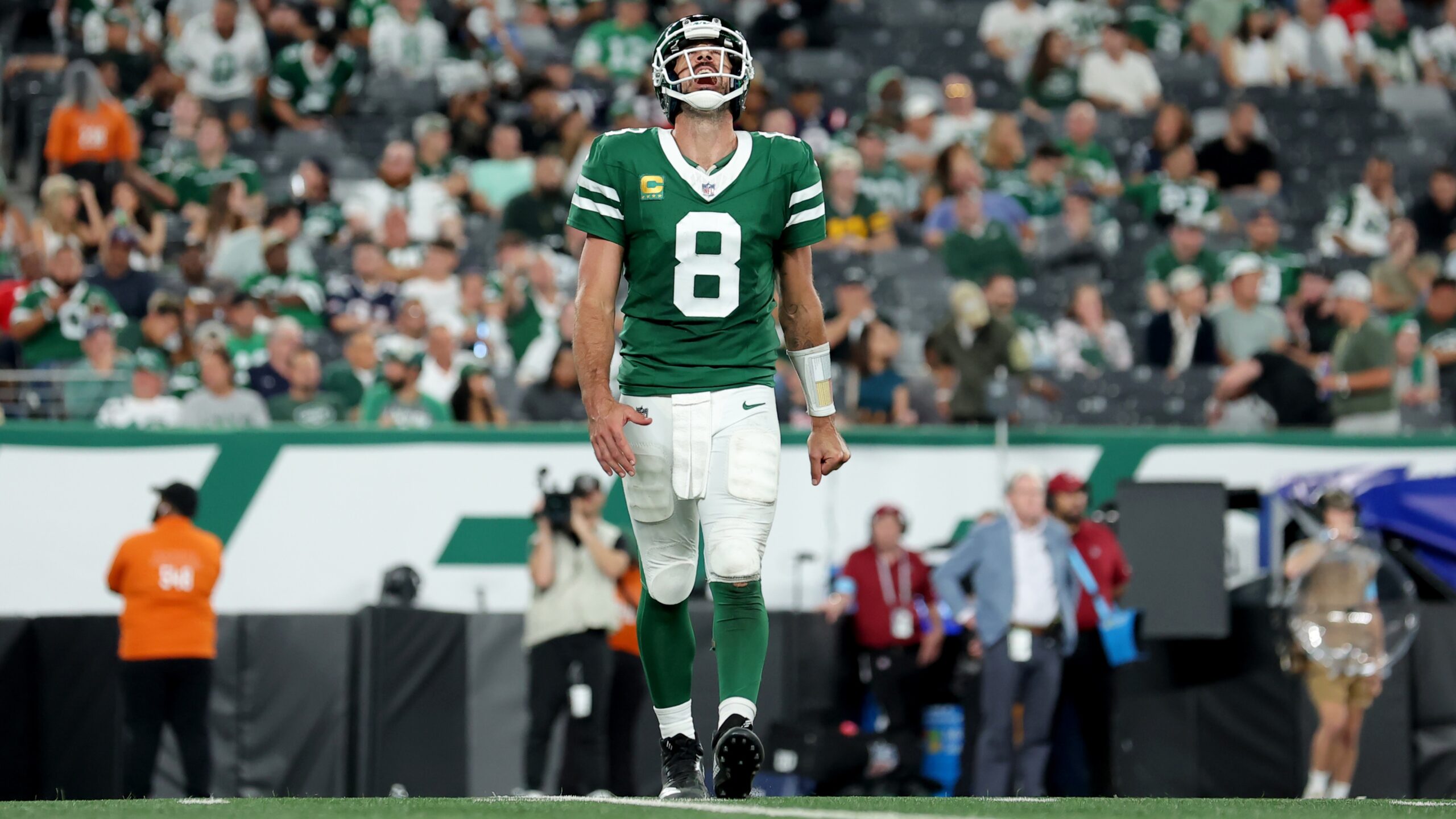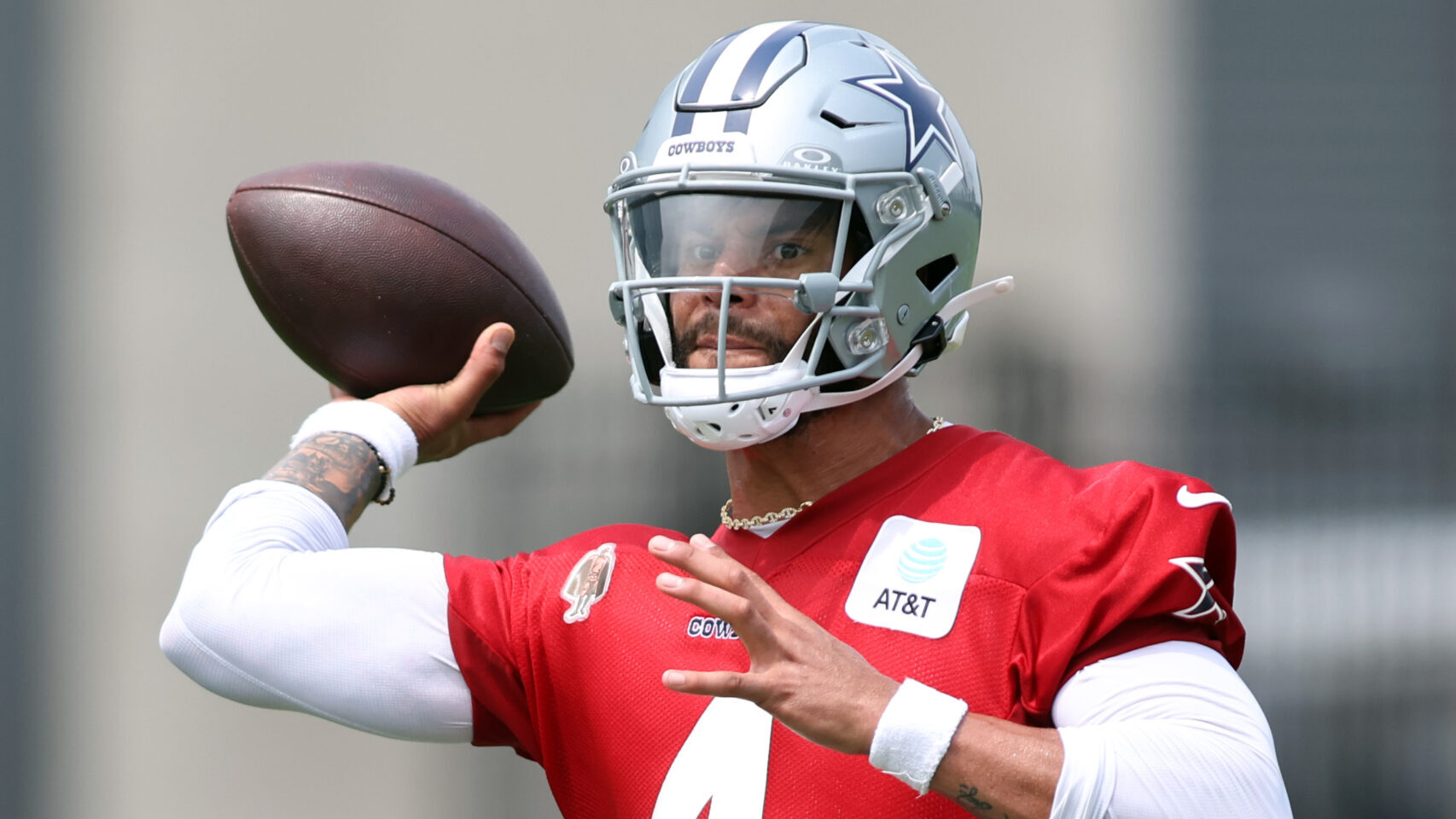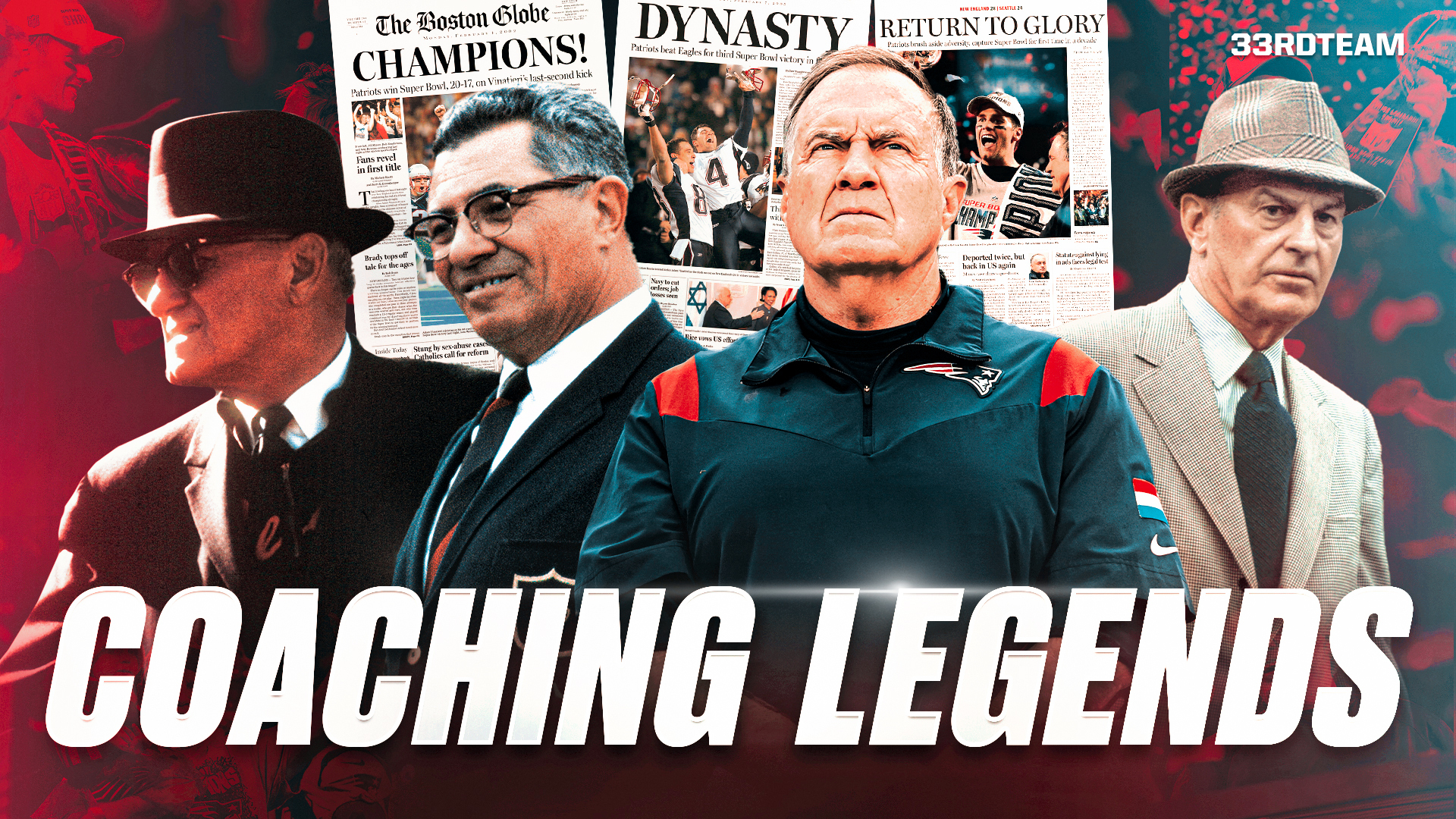Analysis
8/4/23
9 min read
11 Players Who Aren't In the NFL Hall of Fame, But Should Be

Even the best NFL players don’t necessarily leave the game and, after the five-year waiting period, become Gold Jackets. No, enshrinement into the Pro Football Hall of Fame is for, if you will, the elite of the elite.
Some guys get selected during their first year of eligibility, including Joe Thomas and Darrelle Revis, this Saturday. For such slam dunks, though, some men wait years — even decades — to get that highly anticipated knock on the door from the Hall.
Before we get to the 11 already-eligible players who our panel believes most deserve to have plaques in Canton, with comments from Hall of Fame selectors and The 33rd Team contributors Vic Carucci, Paul Domowitch, Clark Judge and Barry Wilner, it’s important to at least mention the names of each former player who received a vote. Why? Simply because each of them could and probably should be recognized and honored at some point.
So let’s hear some cheers for all these guys:
Domowitch suggested CB Eric Allen; DE Jared Allen; Guard Jahri Evans; WR Torry Holt; RB Dan Reeves, who had major success as a coach, too; RB Fred Taylor; Tackle Jim Tyrer; WR Reggie Wayne; LB Patrick Willis; and two-way lineman Al Wistert.
Carucci went with QB Ken Anderson; Holt; OT Joe Jacoby; DE Jim Marshall; LB Clay Matthews; LB Tommy Nobis; WR Sterling Sharpe; WR/special teams ace Steve Tasker; WR Otis Taylor; and Wayne.
Judge chose LB Maxie Baughan; RB Roger Craig; DE Lavvie Dilweg; LB Randy Gradishar; G Bob Kuechenberg; RB Verne Lewellen; DB Eddie Meador; DT Tom Sestak; Sharpe; and Wistert.
Wilner's candidates were Allens; Craig; DE Dwight Freeney; LB James Harrison; Kuechenberg; Marshall; Matthews; Taylor and Wistert.
Of our 11, Wistert is listed first because he received the most selections from our panel, with three. The others, all in alphabetical order, got two votes each.
11 Players Who Should Be in the HOF
T-G-DT Al Wistert (1943-1951)
The top guy with three selections, Wistert was a four-time All-Pro with the Philadelphia Eagles. He made the 1940s All-Decade Team and won two championships. Even if World War II watered down some of the competition, Wistert was a difference-making performer then and a dominator beyond.
“What’s not to like?” Judge asked. “Let’s be honest: If he were a modern-era candidate today, he’d be a first-ballot choice. How he was left off the Centennial Class of 2020 is still a mystery to me. He should’ve been one of the first included.”
CB Eric Allen (1988-2001)
A six-time Pro Bowl cover guy who was a standout on defenses coached by Buddy Ryan and Bud Carson, Allen is tied for 21st in career interceptions with 54. He’s tied for eighth in pick-6s with eight.
“He has been punished because he wasn’t an All-Decade selection,” Domowitch said. “But the four cornerbacks who were All-Decade picks in the '80s and '90s – Deion Sanders, Rod Woodson, Darrell Green and Aeneas Williams – all are in the Hall of Fame. Sanders and Woodson went in in their first year of eligibility. Green made it in in his second year and Williams, who has just one more interception than Allen, went in in his fifth.”
Time for Allen to join them.
DE Jared Allen (2004-15)
Among the most accomplished sack masters of the modern era – or any era – Allen was a four-time All-Pro who starred for the Kansas City Chiefs, Minnesota Vikings, Chicago Bears and Carolina Panthers. He has been a finalist for the past three years.
“Opponents always had to scheme to neutralize Allen, and rarely did it work,” Wilner said. “His 136 sacks rank 12th in league history, and he was a consistent threat throughout his career. Only Julius Peppers and Terrell Suggs had more sacks than Allen and are not in Canton. They will be. Allen should be as well.”
RB Roger Craig (1983-93)
San Francisco’s West Coast Offense revolutionized the passing game under the brilliant Bill Walsh. Craig was a key cog in helping the 49ers win three Super Bowls. A four-time Pro Bowler, he had 508 catches and 16 touchdowns in his seven seasons with the 49ers, rushing for 7,064 yards and 50 touchdowns. In 1988, Craig was the league’s Offensive Player of the Year with 2,036 yards from scrimmage.
“Joe Montana and Jerry Rice are the offensive stars from the 49ers’ run of four Super Bowls in the 1980s … yet Rice wasn’t there for two of those championships,” Judge said. “Is there no one else HOF worthy? There is. You’re looking at him.”
WR Torry Holt (1999-2009)
He was a seven-time Pro Bowler and member of the 2000s All-Decade Team, even though Holt was a second option to Gold Jacket Isaac Bruce for early portions of his career. Holt twice led the NFL in receiving yards and finished his career (10 years with the Rams, one with the Jaguars) with 74 TD catches.
“He’s been a four-time finalist and clearly has deserving Hall of Fame credentials,” Domowitch said. “All-Decade Team, eighth all-time in receiving yards per game. Eight 1,100-yard receiving seasons. The other three receivers on that All-Decade team with him – Randy Moss, Terrell Owens and Marvin Harrison – are all in Canton. Holt’s the only one who isn’t.”
OG Bob Kuechenberg (1970-83)
A six-time Pro Bowl blocker at left guard, who occasionally was needed at other positions on the line, Kuechenberg somehow slipped through the cracks. Miami’s Larry Little and Jim Langer already have Gold Jackets, and Kuechenberg was with them as road graders for Larry Csonka, protectors for Bob Griese and his main target, Paul Warfield. All of them are in the Hall.
“He was an eight-time modern-day finalist for Canton … and there’s a reason,” Judge said. “The six-time Pro Bowler was a great offensive lineman on a great team. Don Shula once said, 'Bob did more to help my team win than any player I ever coached.’
“Works for me.”
DE Jim Marshall (1960-79)
After one season in Cleveland, Marshall became a fixture on the defensive line in Minnesota – for 19 years. He suited up in all 270 games the Vikings played during that span, helping them make four Super Bowls.
Just to play that many games, a player must be special, and Marshall had 130.5 sacks (unofficial in those days) as well as 30 fumble recoveries.
“Forget his wrong-way run that Marshall became infamous for,” Wilner said. “Marshall was a team leader who showed up every day – practice and games – with the same dependability and professionalism. He is the epitome of what a Hall of Famer should be, and deserves to emerge from the Seniors category and become a Gold Jacket.”
LB Clay Matthews (1978-96)
The middle of the three defensive standouts of the same name to play in the NFL – incredible in its own right – Matthews was a tackling machine for 16 seasons in Cleveland and another three in Atlanta. His longevity adds to his candidacy, and his productivity was immense: 1,595 tackles, 82.5 sacks, 27 forced fumbles and 14 recoveries, plus 16 interceptions.
“His body of work says he should be in the Hall of Fame,” Carucci said. “He led the NFL in tackles four different times. He also played a significant role in the Browns’ three AFC Championship Game appearances from 1986 to 1989.”
WR Sterling Sharpe (1988-94)
The brother of Hall of Fame tight end Shannon Sharpe, Sterling Sharpe probably has been hindered by his short résumé. The numbers for the Green Bay Packers receiver are outstanding. Plus, he helped make Brett Favre a Hall of Fame quarterback.
“His career was cut short by a neck injury,” Judge said, “but, oh, what a career. In seven seasons, he led the league three times in catches, twice in receiving TDs, and produced 1,000 or more yards receiving five times. Oh, almost forgot: He was an All-Pro three times and Pro Bowler five, too. Next to Jerry Rice, he was the most dominant WR of his era.”
WR Otis Taylor (1965-75)
The wild, wide-open offenses of the AFL were memorable for almost everyone. But Taylor’s role in them for the Chiefs seems to have been lost.
A two-time AFL champion and a key member of a Super Bowl winner, Taylor led the AFL with an astounding 22.4-yard average on 58 receptions in 1966. Don’t think he was a one-trick pony, though. This thoroughbred could get deep and break long gainers on short completions. Take a look at what he did to Minnesota in Super Bowl IV.
“Everything about his career screams Hall of Fame,” Carucci said. “He was a game-breaking target for Len Dawson and the Chiefs, leading the AFL in average yards per catch as Kansas City reached the first Super Bowl. A year later, he was first in the AFL in touchdown receptions. He helped propel the Chiefs to another Super Bowl, which they won. Then, the following year, when the AFL and NFL merged, Taylor was the NFL’s leader in receiving yards and an All-Pro.”
WR Reggie Wayne (2001-14)
Yes, a fourth wide receiver, which indicates how much of a backlog of quality players there is at the position. Wayne was a No. 2 wideout for the Colts, teaming with current Gold Jacket Marvin Harrison. But when Harrison left Indy in 2008, Wayne became the primary target for Peyton Manning.
“He should be a slam-dunk choice,” Carucci said. “Not only was Wayne great in helping the Colts win a Super Bowl with Manning as quarterback and Harrison as their No. 1 receiver, but he also excelled after assuming the top receiving role and helping the Colts reach another Super Bowl in 2009. Additionally, he made the Pro Bowl in 2012, at age 34, with then-rookie QB Andrew Luck.”











